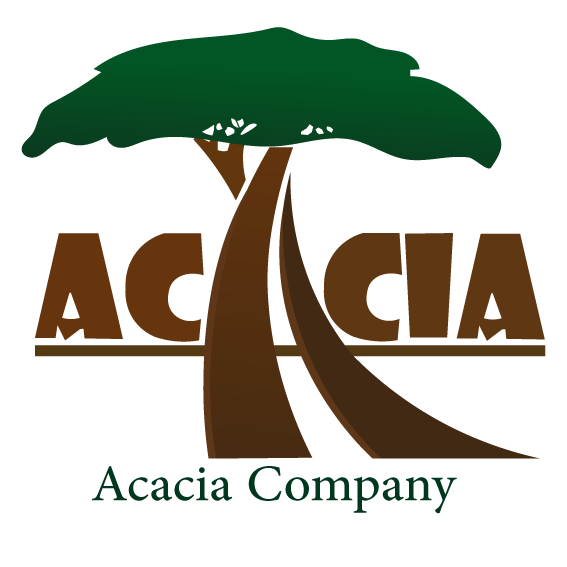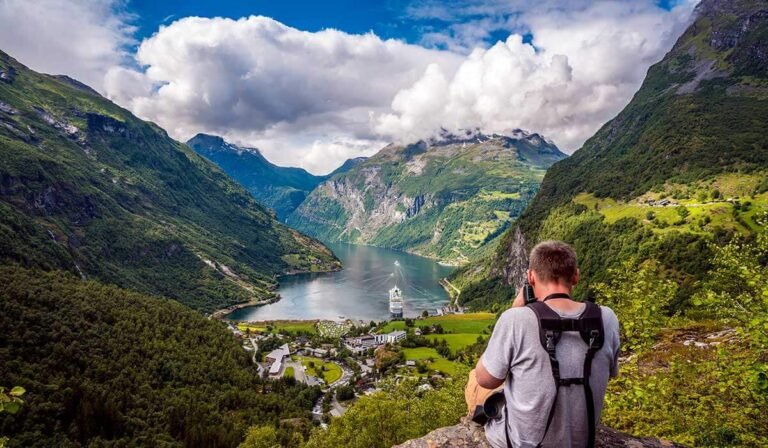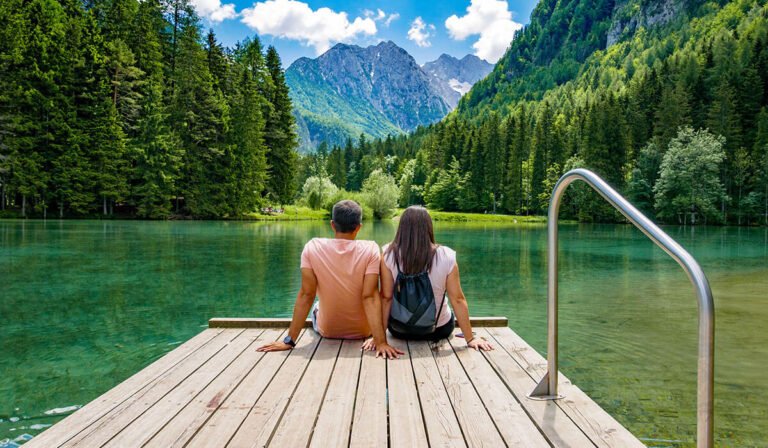Join Our Journey to Libya
your gateway to the wonders of desert tourism in Libya , Embark on a captivating journey through the rich heritage and breathtaking landscapes of this ancient land.
25
YEARS
OF EXPERIENCE
Go travel. Go discover. remember us !
Let us introduce you to some of the most remarkable destinations that Libya has to offer.
Best Price Guarantee
The cheapest prices and offers with distinguished services
Amazing Destination
Wonderful tourist areas throughout Libya.
Coastal Tourism
Libya’s coastline stretches along the beautiful Mediterranean Sea, offering stunning beaches, historical sites, and vibrant cities. Here are some of the notable cities for coastal tourism.




Leptis magna:
Leptis Magna, once a significant urban center in North Africa, sits by the Mediterranean Sea at the entrance of the Leptis Valley, a natural harbor situated 3 kilometers east of Al-Khoms and 120 kilometers east of Libya’s capital, Tripoli. During the Roman Empire, this city held great importance in North Africa. Recognizing its historical significance, UNESCO designated Leptis Magna as a World Heritage Site in Libya in 1982.




Apollonia:
Apollonia, a small city in Libya, is situated along the Mediterranean coast within the Green Mountain region, approximately 30 kilometers northeast of Al Bayda.





This city is built upon the ancient ruins of Apollonia, which is regarded as an open-air archaeological museum. Sousse, another city, lies in the Jebel Akhdar district nearby.
With a rich history dating back to the 7th century BC, Apollonia was originally established by the Greeks after the founding of Shahat (Cyrene). They named it Apollonia in honor of their deity Apollo, the god associated with beauty and music. Initially serving as a port for Shahat, Apollonia flourished and eventually became the capital of the Five Cities region during the 5th century AD in the Byzantine era. Ongoing research and excavation at the archaeological site reveal Greek, Roman, and Byzantine artifacts. Apollonia boasts a delightful climate and captivating natural surroundings. Located about 15 kilometers to the east is a prehistoric cave where two Neanderthal skulls were discovered.
Sabrata:
Sabratha is a city in Libya that had the Greek name “Leproton Polus Kai Lemen” (a port and city of Lebroton) before being known as “Sabratha.” European travelers in the 19th century, including Barthes and von Maltzan, documented the ruins of Sabratha. They described various features such as stages, columns, arches, a dock, and marble statues, including a well-proportioned female statue. In 1911, during the Italian occupation of Libya, the Italian government sent historians and archaeologists to search for Roman antiquities in Sabratha and other Libyan cities. Extensive excavations took place from 1923 to 1936, resulting in the discovery and restoration of numerous buildings, streets, theaters, and cemeteries that still stand today.





Notably, the large theater in Sabratha hosts annual concerts.
Sabratha is renowned for its sandy beach along the Mediterranean Sea, surrounded by pine forests and parks like the Sabratha Family Park, the Zoo, and Dhahrat Banur. From these locations, visitors can enjoy panoramic views of the area and the archaeological city.
Tripoli:
Tripoli, the capital of Libya, is situated in the northwestern part of the country. The city is constructed on a rocky peninsula that overlooks the Mediterranean Sea, directly across from the southern tip of Sicily.





One of the main attractions in Tripoli is the old city located in the center, which draws many tourists. It has a rich history, particularly during the Ottoman and Carnamelli era, when Tripoli served as a hub for trans- Saharan trade connecting the Mediterranean Sea through its port. Many buildings from that period, including the old hotels, still stand today and continue to entice and fascinate visitors.
It shares borders with the Tajoura region to the east, Janzour to the west, the Al-Sawani region to the south, and the Mediterranean Sea to the north. At the heart of the city lies Martyrs’ Square and the Red Serail.
Renowned as the “bride of the Mediterranean,” Tripoli captivates visitors with its picturesque orchards and white buildings.
Qasr al-Hajj:
Qasr al-Hajj is an ancient fortified structure in Libya, resembling a circular granary or grain silo. It is situated approximately 130 kilometers from Tripoli, along the road to Al-Aziziya and Al-Jawf. Constructed in the 7th century AH (13th century AD), its primary purpose was to provide storage for grains and crops for the families residing in the region. In exchange for utilizing the silo, the families would contribute a quarter of their harvest.






According to local accounts, the owner of the silo would
suspend its operations periodically, during which time those who returned from the silo would teach the Qur’an and Islamic sciences to the people of the surrounding area. Initially, the building comprised 114 rooms, a number believed by many to symbolize the number of surahs (chapters) in the Qur’an—a viewpoint commonly held among the villagers in the region. Presently, the structure consists of 119 rooms, as 10 rooms were divided due to inheritance disputes, and an additional 29 basements were added over time.
features a significant number of animal-powered olive presses, some of which are still operational.
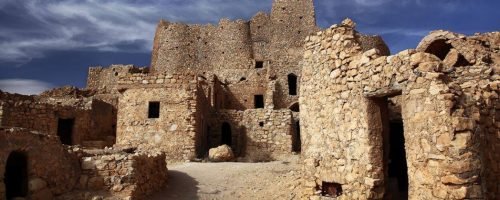
Within Kabao, you’ll discover the ancient Abu Muhammad al-Kabawi Mosque, likely constructed on the remains of a former church after the introduction of Islam to the region in the 23rd year of the Hijri calendar. The village is also home to the Mujahid Suleiman al-Baruni’s residence. Notably, the nearby Ibanin village stands as the most prominent archaeological site, located on the northern bank of Kabau.
Kabao:
Kabao village is nestled in the Nafusa Mountains, situated east of Tamzin and Fusta villages, and west of Al-Majabra village. The renowned Kabau Palace, over 900 years old, is a circular structure with a diameter of around 20 meters and a height of approximately 18 meters. It encompasses six floors, including two underground levels, and houses 360 rooms used for storing agricultural goods such as oil, dates, figs, wheat, and barley. The palace also.



Tolmitha
Tolmitha is a small town in the northeastern region of Libya, is located 20 km north of Marj city.





Its ancient city, originally named Ptolemais in the 6th century BC, has evolved into its present form. It served as a harbor for ships and boats destined for the current city of Barshi al- Marj. Talmitha boasts a picturesque setting amidst the sea, mountains, and forests, making it a captivating destination. Recognized as one of the five historical cities in Libya, it holds significant archaeological value in the area.
Among its notable landmarks are the Ptolemaic , cemeteries, the impressive cistern, and the Roman theater.








Cyrene:
Cyrene, a historic city in the northeast of Libya, was founded by the Greeks in the Green Mountain region. It is located approximately 10 km from Al Bayda and is the second largest city in the Green Mountain Governorate.
Cyrene is renowned for its Greek baths, the Temple of Zeus, the Temple of Apollo, the Agora, the Shura Council, and the Acropolis Castle. During the Roman era, modifications were made to the Greek structures, and new buildings such as Roman baths, a theater, the Hercules Portico, temples, monuments, and an outer wall were constructed. The city also holds numerous Byzantine-era churches and had notable visitors like the Greek philosopher Plato.
Desert Tourism
Libya’s vast desert expanse is a treasure trove for adventurers and nature enthusiasts. Here, ancient civilizations have left their mark, and stunning landscapes await exploration. Let’s delve into the most important destinations for desert tourism.





Ghadames:
Ghadames, a Libyan city near the borders of Tunisia and Algeria, is a renowned palm oasis known as the “City of Caravans.” With a population of 25,000, it served as a vital trade hub between the Sahara’s north and south regions. Recognized as a UNESCO-protected historic city, Ghadames features significant archaeological sites such as Tamsmudin’s Roman ruins and ancient palaces.
Notable tourist attractions include Ain al-Fers, Lake
Majzam, Ramla area, and the esteemed Ghadames Museum.












Despite being one of the driest regions in the Sahara Desert, the Akakus Mountains are home to some plant species, including the Calotropis plant.
The region is famous for its ancient caves, which feature an abundance of carvings and rock paintings. Recognizing the significance of these paintings and sculptures, UNESCO designated the Akakus Mountains as a World Heritage Site in 1985.
Akakus - A Timeless Oasis
The Akakus Mountains, also known as Akakus Tedres, are rocky mountains situated in the southwestern part of Libya within the Sahara Desert.
The mountains are adorned with archaeological inscriptions displaying remarkable sculptures of various large animals such as elephants, horses, giraffes, cows, and ostriches. These inscriptions are typically separate and rarely depict human figures.
The Akakus Mountains offer a diverse range of landscapes, including colorful sand dunes, rock arches, massive stones, and valleys. Prominent sites in the area include the Avazagar Arch and the Tin Khalja Arch.
Ubari Lakes - Nature's Masterpiece
In the southern region of Libya, specifically in Ubari, there are impressive lakes scattered among the sandy landscape. Approximately twenty of these lakes have remained visible to this day.
Recent archaeological studies have revealed the existence of numerous freshwater lakes in Fezzan, with some located in the southern parts of the country.






The exact origin of the name “Ubari” is not definitively known, but it is believed that the area was named after the large number of water wells present in the past. Over time, it became known as Ubari , Wadi al-Hayat, situated in the south of Sebha, is known for its diverse population and harmonious coexistence. The valley is densely populated and inhabited by Arabs, Tuareg, and various Tebu tribes . The archaeological city of Garma still bears traces of the ancient Garamante civilization. It encompasses numerous monuments, tombs, and archaeological pyramids, including the Hattiya Pyramids, Al-Kharaeq, and Larco Palace, among others . The natural beauty of the area makes it a popular tourist destination, particularly for desert tourism. Noteworthy features include the saline lakes, such as Lake Qabroun, surrounded by towering sand hills, as well as Lake Umm al-Ma, Lake Umm al-Hussan, Taruna, and Mandara. Some of these lakes have dried up while others still retain water.
Ghat - Gateway to History
Ghat, situated on the western edge of the Libyan desert near the Libyan-Algerian border, is a city that serves as the capital of the Ghat municipality. It possesses a domestic airport for regional flights. The population of the city consists mainly of Tuareg people, with some being Berbers who communicate in both spoken and written Berber using the Tifinagh script, an ancient Libyan writing system. The remaining residents primarily speak Arabic, while a small number are fluent in the Hausa language.







The city is home to an ancient Turkish castle and is
surrounded by the Akakus Mountains on its eastern side.
It also has several associated villages. About 100 km to the south lies the Tassili mountain range, which houses the oldest known archaeological inscriptions dating back to around 7,000 BC. Ghat is renowned for its historical Turkish castle, one of the oldest in the city, and serves as an expansive natural museum. In ancient times, the city served as a vital trade route for caravans and maintained close ties with Timbuktu, located in the heart of the Sahara Desert.
Wau Anamos - The Forgotten Kingdom :
Waw al-Namus, situated in south-central Libya and south of Haruj, is a volcanic mountain known for its unique characteristics. Rising 575 meters in height, it stands out as one of the most extraordinary areas globally. This volcanic mountain and extinct volcanic sheet are composed of black basalt rocks. At the foot of the mountain, a multitude of multi-colored lakes can be found, surrounded by vegetation such as reeds, bamboo, palm trees, and tamarisk trees. The circular crater of the volcano spans an estimated distance of 10 to 20 kilometers. The region serves as a habitat and nature reserve for various bird and animal species.
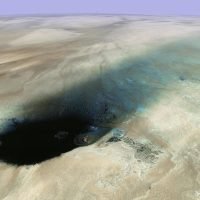




Located in the heart of the Libyan desert, the “Waw Al Namous” site captivates visitors with its dormant volcanic mountain, black basalt rocks, and diverse array of lakes. It has often been likened to a “fragment of the moon” within the desert due to its distinct shape, topography, and the contrasting color of its sand and rocks, which differ from the surrounding desert region.
Maghidt Desert - Surreal Sandscape:
The Akakus mountain range and the stone city of ‘Maghedet’ can be found in the southwestern part of Libya, adjacent to the Algerian border. It is situated approximately 1,250 km away from Tripoli and 90 km from Ghat.





The Akakus mountain range showcases a diverse combination of harsh desert landscapes, featuring volcanic and limestone rocks, as well as abundant vegetation found in numerous valleys. These valleys, numbering over twenty, branch out within the mountains. Aside from the ancient wall drawings that date back thousands of years, the region boasts caves, arches, and distinctive rock formations shaped by the wind. Among
the notable formations is the Avazagar Arch.
This area was recognized as a UNESCO World Heritage Site in 1985.
Traverse the vast expanse of golden sands, guided by experienced Bedouin guides who will share their wisdom and stories along the way.
Immerse yourself in the simplicity and tranquility of desert life, experiencing the rhythm of the desert and forging a deep connection with nature. This unique, exciting, and historical experience will leave an indelible mark on your soul. Acacia invites you to embark on an extraordinary adventure through time and nature. Immerse yourself in the wonders of our land, where
history, culture, and breathtaking landscapes converge. Let us be your guide to the hidden treasures of Libya’s desert tourism. Plan your journey today and create memories to last a lifetime Services we offer
Camel Trips - Unforgettable Journeys:
Embark on a camel trip across the Libyan desert and discover the allure of the ancient trade routes.




Cultural Excursions:
Discover the rich cultural heritage of Libya through our carefully curated cultural excursions. Explore ancient ruins, visit historical sites, and engage with local communities to gain a deeper understanding of Libya’s fascinating history and traditions






Desert Camping:
Experience the magic of the desert with our overnight camping experiences. Fall asleep to the gentle sounds of the desert, enjoy traditional Bedouin hospitality, and wake up to the awe-inspiring beauty of the sunrise over the horizon





Checkout our testimonial

Loury
TRAVELLER
I am very grateful to the Acacia tourism team for what they provided for us during our trip to discover the beautiful areas of Libya.

Tamer
TRAVELLER
I loved the tourist areas in Libya very much. They are very beautiful. They have a large desert and comfortable clear beaches
Planning an epic tour & adventure. Remember us !
Modi. Pariatur orci viverra? Ab alias. Sapiente eveniet nullam distinctio, praesentium anim eaque vero. Ipsa, excepturi a amet.
Our 24/7 Phone Services
Call: 123-456-7890
Recent Insights
Suscipit nobis possimus lacinia senectus scelerisque except.
